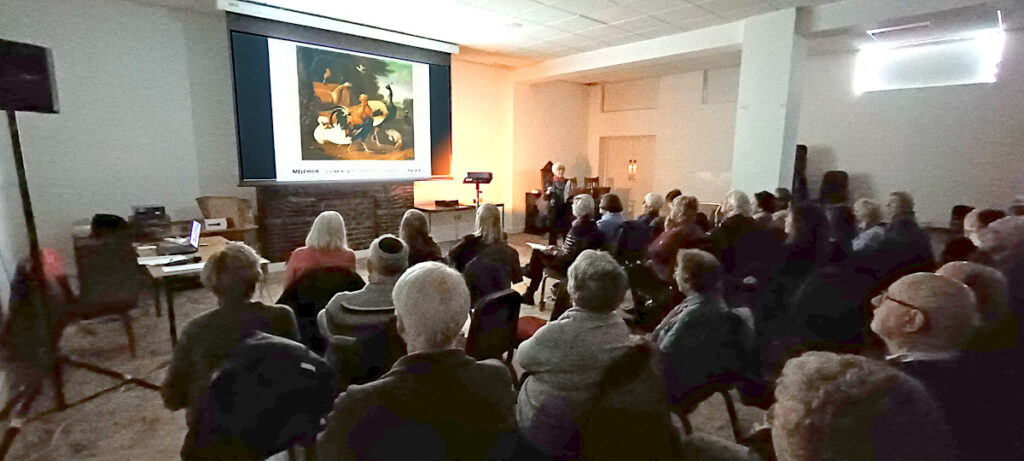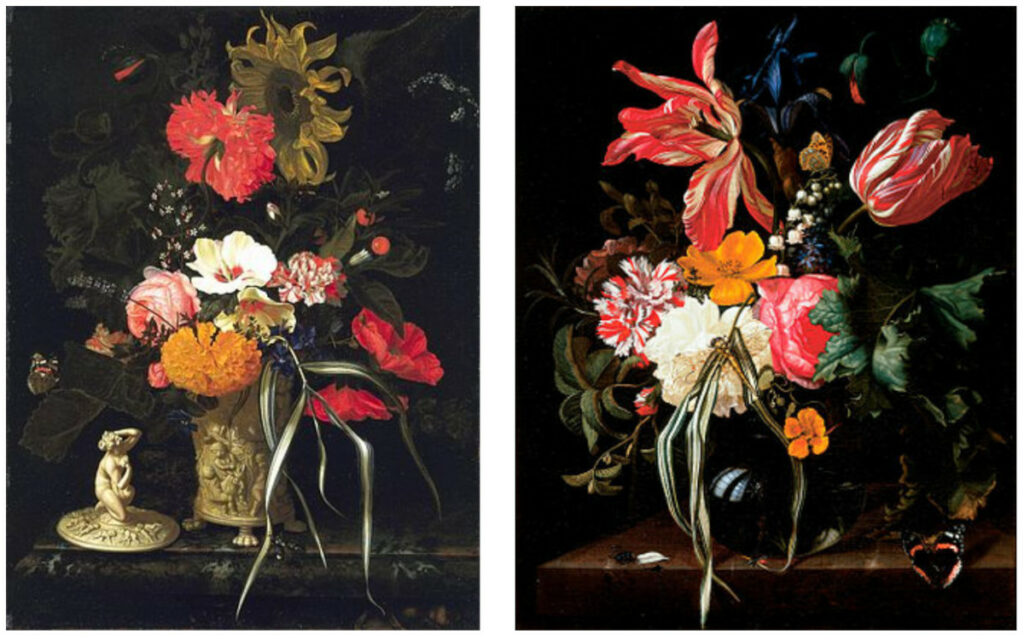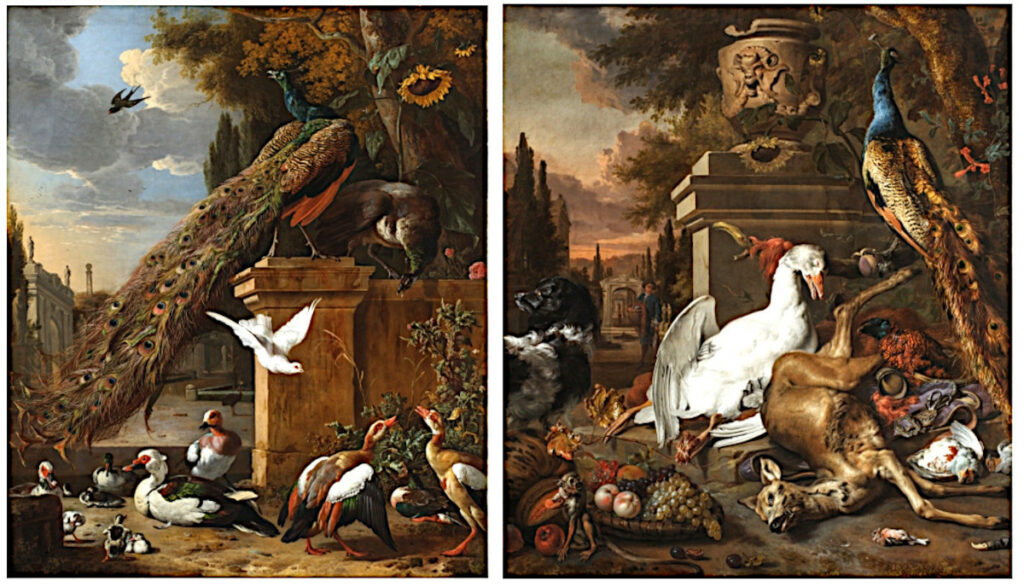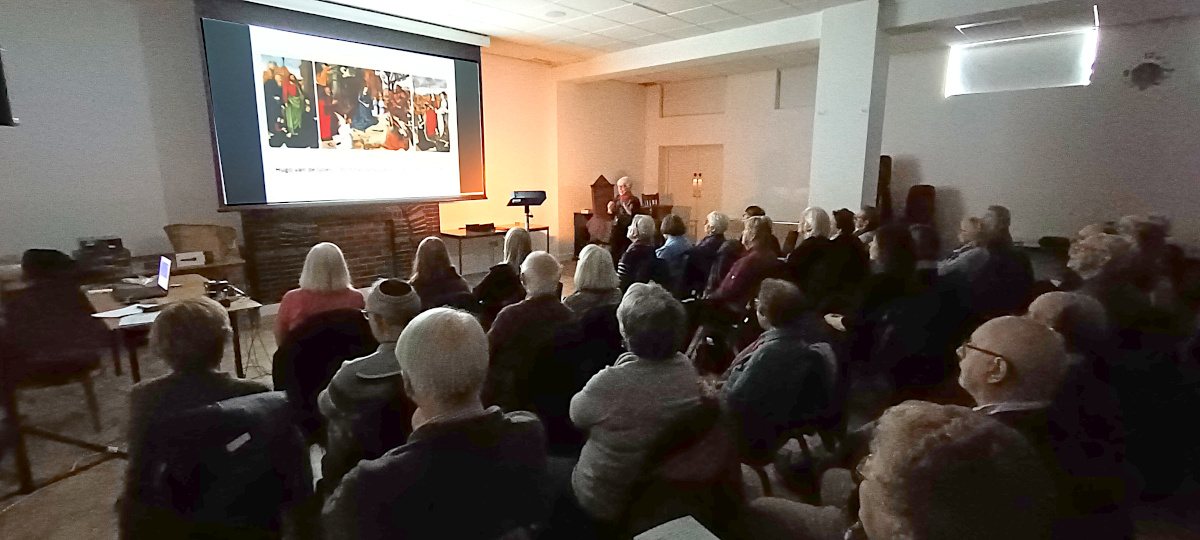This week’s talk by Jennifer on the Golden Age of Dutch Art concentrated on the development of Still Life or “Stilleven” paintings. We started with a quick recap of where we had got to in our 12 week programme, and a brief announcement of what remains to be covered – including pictures from the audience and a secret agenda for the final week!
Still Life is exactly that – “Still”, but Jennifer introduced us to the importance of surface – shiny, metallic, transparent, satin-like fabrics, fur and feathers – and the complications of painting those for the artist. We were asked to look for Food, Flowers, Luxury items denoting wealth, Memento Mori and Vanitas reminding us of the death that awaits us all, and for the artist’s skill in representing textures, surfaces and reflections.

The first artist in this session was Clara Peeters, about whom surprisingly little is known. Clara included herself in many of her paintings, but only as a reflection in a shiny object – much like Van Eyck in the mirror in the Arnolfini portrait of 1434. As examples were shown, we got better and better at finding her image, and finding her name on the wedding knife that frequently features in her still life paintings. Food and decorative objects featured strongly. Many of her paintings have been dated. but without a firm date of birth and without a firm date of death, there is still much to learn. Was she painting to order, or was she painting in the hopes of selling her work once completed?

Our next artist was Maria van Oosterwijck who specialised in floral arrangements, but these were floral arrangements with additional features. Instead of spotting the artist in the reflections, we were now spotting butterflies hidden amongst the flower heads, and in the shadows were articles that warned the viewer against the evils of vanity. Her painting of Sunflowers with Jewellery Box even contains a copy of the 10 Commandments and a Bible as a warning. Maria van Oosterwijck was painting to commission, and was a commercially successful woman artist in the 17th Century.
Our third artist was Rachel Roysch who also specialised in floral arrangements, but often with insects or a lizard amongst the flowers. Typically the floral arrangement would be free standing, balanced on a ledge rather than in a vase.

Our final section this week dealt with the works of Melchior d’Hondecoeter, Jan Weenix and Adriaen Coorte. The first two specialised in wild animals rather than passive objects, but often their subjects were dead game, illustrating that nature is red in tooth and claw. Adriaen Coorte on the other hand seemeds attracted to strawberries, asparagus and translucent gooseberries!
Next week we will have works of art of Dutch Interiors, offered with observations by the audience. What will we find and what will we learn about our choices?

